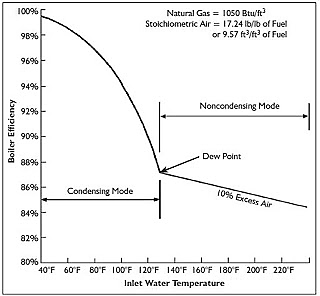 Tankless, sometimes called instantaneous, and storage water heaters have been utilized in commercial and institutional buildings for a long time. The overwhelming majority of these heaters are storage type. The number of tankless product brands continues to grow setting the stage for a battle. The tankless manufacturers have opened with their offensive strikes. The storage manufacturers set a strong defense and readied a counterattack. Why not peek into the war room?
Tankless, sometimes called instantaneous, and storage water heaters have been utilized in commercial and institutional buildings for a long time. The overwhelming majority of these heaters are storage type. The number of tankless product brands continues to grow setting the stage for a battle. The tankless manufacturers have opened with their offensive strikes. The storage manufacturers set a strong defense and readied a counterattack. Why not peek into the war room?
What’s the Water Heater Battle About?
Everyone agrees that the result is to satisfy the end user by delivering hot water at the designed temperature into the building piping system. The key points of discussion are more about efficiency, energy, cost, space, and risk. A typical battle in the construction world. Let’s start by looking at these points from the view of the tankless water heater supplier. If you are wondering why I do not call them instantaneous, check out our blog, Commercial Gas Fired Water Heater Types.
One more comment and disclosure, we represent manufacturers of both products, so we joyfully provide either product you specify.
Tankless vs Storage – Commercial Applications
Most tankless manufacturers were born from the residential water heater market. The Aerco Innovation is one of the exceptions. The Innovation was designed from the beginning to serve the demanding commercial market. Wall mounted tankless water heaters are water tube design and the Aerco Innovation tankless is a fire tube design. PVI and Bock tank-type water heaters are also fire tube design.
The tankless wall mounted water heaters in home basements or utility closets are often compared with the old 40-gallon tank type water heater of the 60s, and 70s.
Those old home water heaters were non-condensing, non-circulating, bottom fired, and vertical top vent stacked. They were very inefficient. Today’s commercial tank type and tankless water heaters are condensing energy-efficient designs.
Claims of 40-50% savings by tankless water heater manufacturers is not correct when comparing today’s commercial condensing water heater designs.
Three Key Efficiency Discussions Presented by the Tankless Water Heater Manufacturers
So, if the 40% to 50% savings claims are not appropriate for your current condensing water heater designs, what is the battle about? The common concerns voiced by tankless manufacturers is about energy cost in three areas. The first claim is that if I have a tank of water just sitting there at 140⁰F, it will lose heat to the atmosphere through the insulation. This is called standby losses.
The second claim is the cycling losses caused by supply air stealing the heat from the water and sending it up the flue during periods of no use.
The third claim is loss of efficiency at low load in systems with a domestic water recirculating system. Let’s look at each of these.
Standby Losses in Tank Type Water Heaters
Let’s address this item using the PVI Conquest. PVI adds insulation which greatly exceeds the ASHRAE 90.1 minimum insulation. All storage type water heaters have some loss of heat through the insulation of the storage tank. How much does this cost the owner?
The Energy Star rating from the Department of Energy involves an independent test of standby losses. If I look at a 130-gallon tank type commercial water heater with 800,000 BTUH capacity, the standby losses are significantly less than ½% of the annual cost. The actual loss at $.80 per therm is less than $100.00 per year. The loss from a 100-gallon tank is even less.
Tank type water heaters do have a standby loss. Is $60.00 to $100.00 per year enough to overlook the advantages of the PVI Conquest? More on that next week.
Cycling & Pre-Purge Losses in Tank Type Water Heaters
The next claim against storage type water heaters is the cost caused by cycling on and off to keep the storage tank water at setpoint. Once again, these are real costs but relatively small. A conquest 130 from PVI has a single pass down feed air path. This allows burner gasses which pick up heat at the top of the water heater to give up that heat to the cold water at the bottom. This results in an energy loss cost of only about $7.00 per year from gas usage and $15.00 for burner fan electricity.
The Thermal Efficiency Battle
Many tankless water heater manufacturers advertise 98-99% efficiency. How can they say that?
Here is a chart from the ASHRAE handbook showing efficiencies at various return temperatures. If you are supplying 40⁰F return water, 99% efficiency is possible by physics. This would require a water heater at full load with no circulation by the pump in the heater and no domestic hot water recirculation system. Not typical for a commercial system.
Here is an example. The Aerco Innovation tankless condensing water heater literature says up to 99% efficiency. The PVI Conquest® tank type condensing storage water heater literature says up to 97% thermal efficiency at full load and 99% efficiency at low load. The Bock OptiTHERM tank type condensing storage water heater literature says up to 99% efficiency. A manufacturer with many wall hung residential style heaters in parallel touts 94% efficiency.
Different models in each brand have different thermal efficiencies. These efficiencies are all rated at full capacity which is not where the heaters operate most of the time.
Domestic Water Recirculation and Thermal Efficiency
Most water heaters operate at no or low load conditions most of the time. Let’s assume, for illustration, that we have a 122⁰F HWR from the building. In low load conditions the recirculation flow rate is most of the flow through the water heater. If the recirculation is the only load, the entered water temperature at the burner is 122⁰F. You can see from the graph above that the efficiency at these times will drop many percentage points.
The PVI Conquest tank type water heater brings a dedicated HWR in near the top of the tank. This keeps the cold water near the burner and the warmer water near the top of the tank. The efficiency of the PVI Conquest will remain high and even increase compared with the water tube tankless units.
Tankless vs. Storage: Summary of the First Battle
Engineers use condensing technologies in both tankless and storage type water heaters for commercial and institutional buildings. This brings the efficiencies of both styles up to the mid 90 percent range or higher.
Storage type water heaters do have standby and cycling losses. These losses can be minimal in water heaters with advanced engineering.
In systems with no domestic water recirculation, such as most homes, the tankless wall hung water heaters can maintain the DOE tested efficiencies. In the commercial applications with domestic water return systems, the efficiency of a properly engineered tank type heater will be better than the tankless heater.
The first battle seems to be a draw. Next week we will look at the cost of ownership as the war continues.


